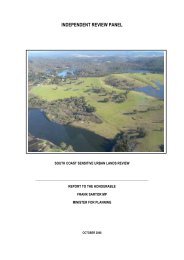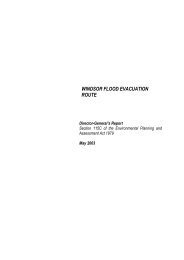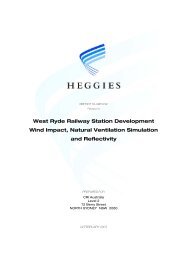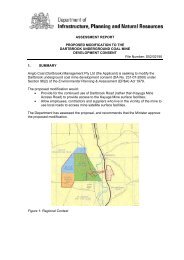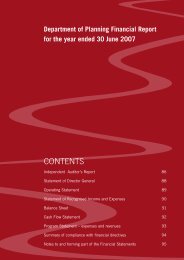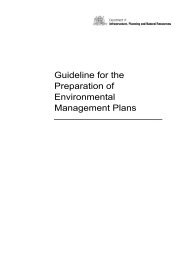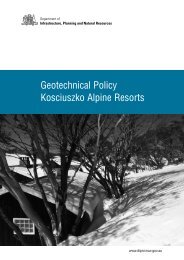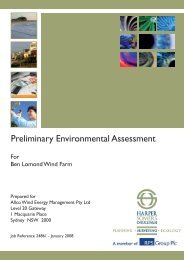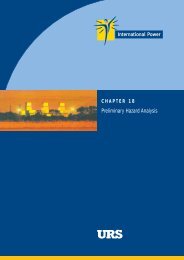NSW Government's response to the recommendations from the ...
NSW Government's response to the recommendations from the ...
NSW Government's response to the recommendations from the ...
You also want an ePaper? Increase the reach of your titles
YUMPU automatically turns print PDFs into web optimized ePapers that Google loves.
<strong>NSW</strong> Government’s <strong>response</strong> <strong>to</strong> <strong>the</strong> planning reviews I September 2004<br />
7 SEPP 5 Taskforce Review<br />
Recommendations - Summary<br />
A new SEPP 5 with <strong>the</strong> following new controls:<br />
• in-fill development in low density residential<br />
zones – require a higher level of design, set a<br />
minimum area of 1000m2, establish a<br />
building envelope that only allows single<br />
s<strong>to</strong>rey dwellings <strong>to</strong> <strong>the</strong> rear of <strong>the</strong> site <strong>to</strong><br />
avoid overlooking of neighbour’s homes and<br />
gardens<br />
• retirement villages and clusters of<br />
independent living, in any urban edge<br />
location (on land zoned non-urban), require<br />
<strong>the</strong> provision of a community bus and o<strong>the</strong>r<br />
support services, a minimum number of<br />
dwellings <strong>to</strong> underpin service levels and<br />
landscape outcomes<br />
• residential care facilities – encourage redevelopment<br />
of existing high and low care<br />
facilities (nursing homes and hostels) by<br />
allowing a floor space ratio (FSR) of 1:1 as<br />
deemed <strong>to</strong> comply, discount any floor space<br />
below ground, lower landscaping standards<br />
for established areas, reconcile any conflict<br />
with Federal accreditation standards and<br />
remove excessive parking standards for<br />
dementia units<br />
• in higher density zones encourage seniors’<br />
housing by providing incentives for vertical<br />
villages, (eg additional FSR of 0.5:1/1:1)<br />
relative <strong>to</strong> FSR permissible on <strong>the</strong> site) for<br />
developments that have on site support<br />
services and 10% affordable/concessional<br />
places, <strong>to</strong> apply only <strong>to</strong> higher density<br />
residential and commercial zones. In<br />
commercial zones require ground floor <strong>to</strong> be<br />
commercial retail uses<br />
• exclude land zoned industrial <strong>to</strong> conserve it<br />
for industrial uses<br />
• provide incentives for larger scale<br />
development <strong>to</strong> include affordable dwellings –<br />
if 10% of dwellings provided for<br />
‘concessional’ residents (purchase and/or<br />
rent) <strong>the</strong>y would be covered under <strong>the</strong> SEPP<br />
and not be replaced by local controls.<br />
Government Response<br />
Supported.<br />
The Seniors Living SEPP 2004 was made on 31 March<br />
2004 giving effect <strong>to</strong> <strong>the</strong> <strong>recommendations</strong> of <strong>the</strong><br />
Taskforce.<br />
The policy should continue <strong>to</strong> cover people with a<br />
disability.<br />
Department of Infrastructure, Planning and Natural Resources Page 25



